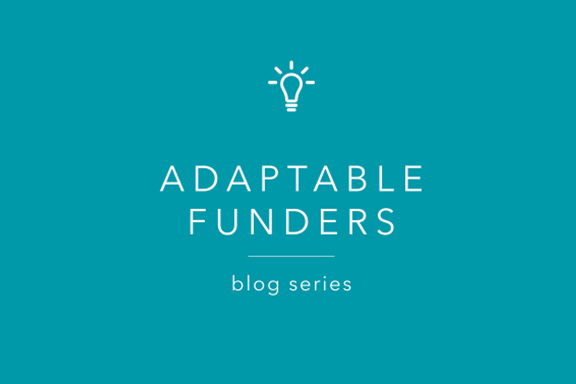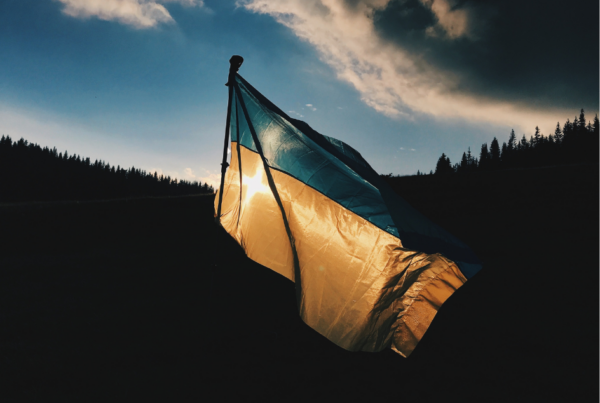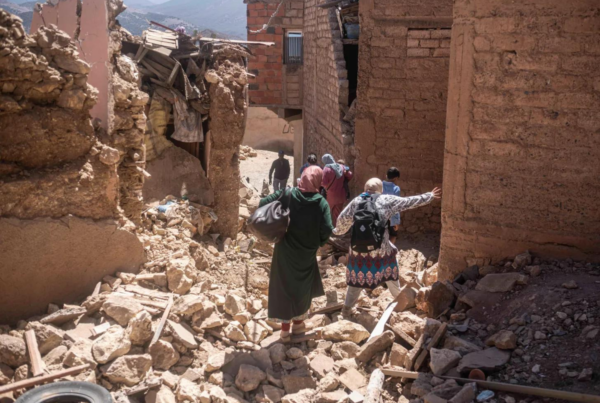
In the wake of the crises of 2020, the philanthropic community has been reaching deeper to become more strategic and more effective. To find out what skills and practices some funders are finding most useful in tumultuous times – and what new lessons they are learning – TPI launched the Adaptable Funder series.
In this post, I sat down with Karen Keating Ansara, long-time TPI client and an inspirational figure in global philanthropy. Karen and her husband Jim established the Ansara Family Fund at the Boston Foundation in 2006 as a donor-advised fund with the mission to help eradicate global poverty. As you’ll see from our conversation, much of their experience as funders is steeped in intentional relationships and a bent towards developing solutions where none yet exist, and they focus a significant amount of their philanthropy in Haiti. In 2008, Karen co-founded New England International Donors (NEID) to create learning and networking opportunities for funders giving across borders. Just before 2010’s devastating earthquake in Haiti, Jim, a former construction executive, had committed to helping Partners in Health build a community hospital there; his work evolved into the co-founding of Build Health International, which now undertakes projects in low-resource settings across 22 countries. Concurrently, Karen partnered with the Boston Foundation (TBF) to establish The Haiti Fund, which later became the Haiti Development Institute and now works to strengthen Haitian-led NGOS by building their capacity and improving collaboration among those who fund them. Karen and Jim give locally through the Boston Foundation and the Essex County Community Foundation, demonstrating how lessons learned abroad can be applied at home. The Ansaras’ responses to this year’s multiple crises provide valuable insights for funders working to address any issue in any geography.
—
TPI: To start, what best practices enabled your response to COVID-19?
The smartest thing we’ve done is to have the right advisors. Before the pandemic hit, I had engaged TPI to assess our grantmaking in Haiti, getting input from other funders and grantees on how to have the best impact now, ten years after the 2010 earthquake. What we’ve learned is simple: Do less, do more of it, and be flexible about how to best support an issue. Focus on fewer grantees with whom we can have real impact with larger, multi-year grants. Prioritize the needs of the most marginalized – especially women, rural Haitians, and persons living with disabilities. Support personal and professional development and connect grantees with each other. And work to strengthen and replicate programs that are already in place, doing good work and seeing success.
In international giving, as with all philanthropy, it is important to find ways to be close to the community where you are trying to have impact. Local leaders can see who is invisible, what is most needed, and how to wield resources effectively to empower the most vulnerable persons. If you are not on the ground yourself, you need to rely on a trusted set of advisors who are there making grants and building relationships, guiding you through the cultural and political dynamics. With The Haiti Fund, we learned the importance of engaging Haitians in our grantmaking committee. They knew so much more than I ever would! Today the staff of the Haiti Development Institute (HDI) and our major grantees, Health Equity International and Partners in Health, are our eyes and ears on the ground. Hearing directly from them about how the COVID-19 pandemic was affecting their communities inspired us to make rapid, no-proposal grants to organizations with broad networks of farmers, teachers, artisans, and health care workers – those who could quickly disseminate personal protective equipment, health education, masks, hygiene supplies, and wash buckets throughout Haiti.
The same principles applied to what we did at home – we relied on learning from our local community foundations about the greatest immediate needs. The Boston Foundation (TBF) has been at the forefront of radically scaling grants to local organizations, especially those working in communities of color hit hard by the pandemic. We have learned so much from TBF about racial equity in grantmaking and about innovations in affordable housing. Similarly, the Essex County Community Foundation’s (ECCF) work to address wealth inequality proved incredibly useful when the pandemic’s restrictions hit our region’s low-income families hard. There have been disruptions to the food supply chain. There have been evictions as people have lost their jobs. And there has surfaced a digital divide where school closures have left some students without access to the internet or computers for remote education. After joining ECCF’s emergency webinars in March, we made quick grants (twice as much as last year) to food pantries and meal programs, emergency shelters and affordable housing, and anti-poverty jobs programs just to meet basic needs in the community. We also gave an unsolicited grant to ECCF itself to help augment their staff to manage it all.
TPI: How has pandemic response worked in Haiti and other countries? Are there innovations overseas that that can be used elsewhere, too?
Developing countries lack many things we take for granted in the US, like hospitals and access to medical oxygen. When Jim heard the alarm bells about COVID-19, he got to work designing segregated COVID units as early as March. Build Health International consulted with over a dozen NGOs and built COVID wards at two hospitals in Haiti and in Uganda. And facing a critical shortage of medical oxygen – essential to patients with COVID-19 – Jim designed an oxygen system that runs on solar panels hooked up to a Tesla battery, a system that’s now being tested in Haiti before being replicated elsewhere. Many of our grant funds support this work.
Likewise, Haiti has such a scarcity of basic supplies for daily life, like running water and sinks. Some of our immediate funding went to buckets with spigots for homes and schools. We also know that preventing the spread of COVID-19 in Haiti, or anywhere, requires culturally appropriate messaging campaigns about things like masks, handwashing, social distancing. Haitians are distrustful of authorities, so any public messaging can’t be based on fear – it has to be positive and engaging. And the messenger is as important as the message itself. So, we gave a $6,000 grant to the Haiti Response Coalition for billboards and social media using Haitian singers to help educate the public. And it seems people have been taking the message seriously, for Haiti has had far fewer cases and hospitalizations than anyone had predicted.
TPI: What has your response to the racial equity and social justice movement looked like, and how is it evolving?
We have had some sensitivity to racial issues given our work in Haiti – but one can never have enough. There’s historical importance to Haiti being the first independent Black nation to come from a revolt against slavery, and yet there is still racism in Haiti. In international philanthropy, there are so many issues to understand: how colonialism played out in different regions; the expropriation of indigenous land and resources; and the marginalization of women and persons with disabilities, which is a big issue in Haiti. Our understanding as donors is limited by the dearth of people with lived experience of the problems in global grantmaking circles.
Many donors are trying to learn more about the complexities of racism since George Floyd’s murder. In my work with New England International Donors (NEID), we invited 45 people working in philanthropy, mostly people of color, to talk about global funders’ unique role in addressing racism in philanthropy. Specifically, we learned we need to do three things. We need to develop strategies to address power imbalance and the lack of funding going to organizations serving people of color that are led by people of color, a disparity as glaring overseas as it is in the US. We need to more intentionally get global funders closer to leaders of color on the ground. And we need to bring more people of color into the global philanthropy sphere with an asset-based lens, recognizing the wealth of wisdom and resources they bring. The lesson here is that as funders we need to look inside ourselves just as closely as we look at the problems we are trying to solve on the ground.
I’m using this framework in my own grantmaking even more, too. I’m asking who is on the board or in leadership positions at organizations. I’m asking for more input into our grantmaking from those who have cultural knowledge and have lived experience of the problems. I’m reading and discussing books on the history I was never taught, I’m reflecting on my own biases, and I’m learning to let go and cede power more regularly. Always, I need people to challenge me more, and I rely on my advisors to do so.
TPI: What are next steps based on what you have seen and learned this year?
This year has made it clear that basic needs like food and housing are the core of life, and that we can’t stop granting to meet immediate and basic needs – both at home and around the world – while we also address the systems that spawn them. To make more progress in Haiti and many other under-resourced countries, we need to bring more donors together to learn about amazing local organizations that are undergirding their communities against great odds. We need to learn about the complex political situations that hinder things like transporting crops to market and medicine to clinics. By putting our heads and our resources together we can ensure long-term sustainability for vibrant Haitian-led organizations.
Whatever comes next, we all need to realize that protecting yourself means protecting your neighbor. The COVID-19 pandemic has reinforced how interconnected we all are locally and globally. This will not be the last pandemic we face in our lifetimes. We need to think of community as global, not in a parochial sense. If we don’t invest in every region of the world, our local community will crumble, starting with the most vulnerable people in it. We need to keep working on strengthening the weakest links in the chain. During this challenging time, I continue to find hope from the courageous and innovative work of our grantee partners and other funders who have shown such profound strength and determination.


